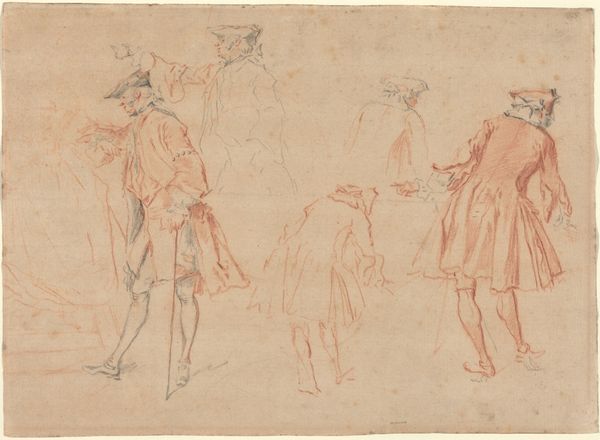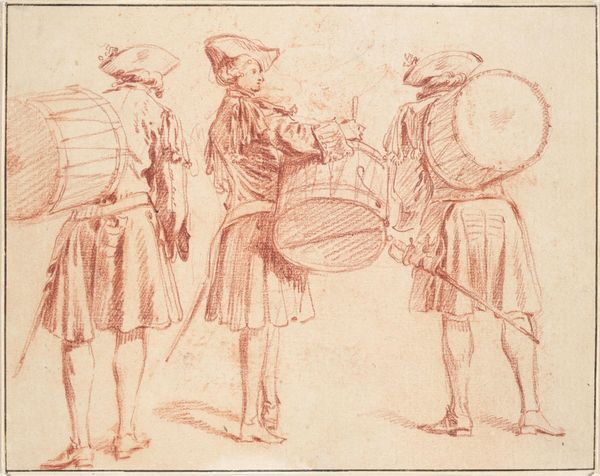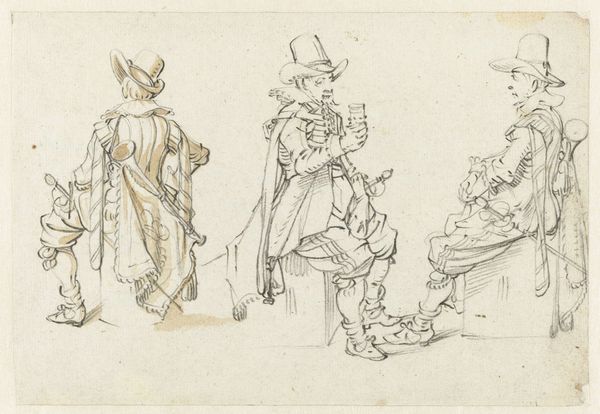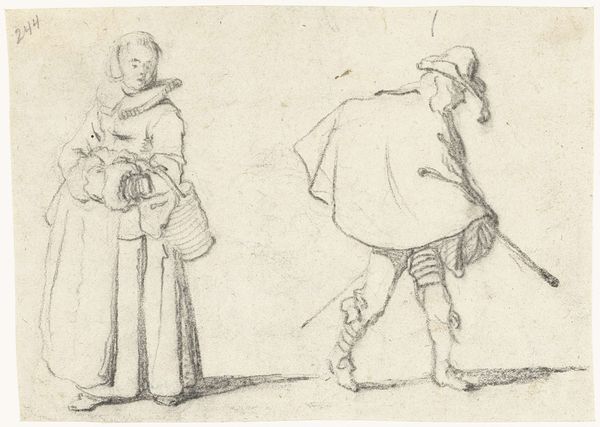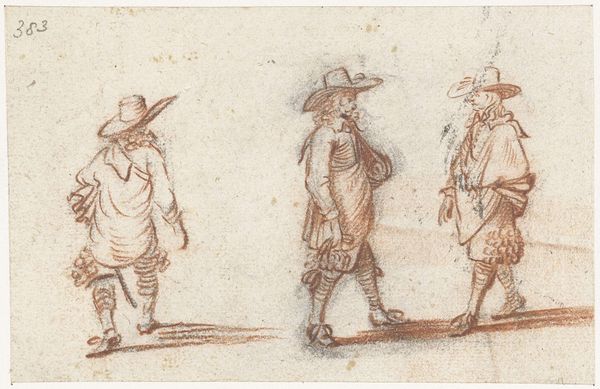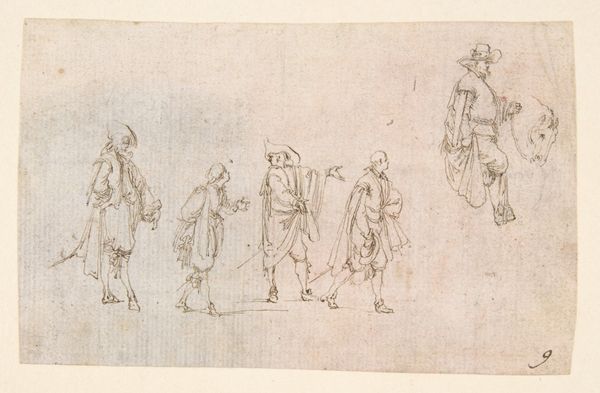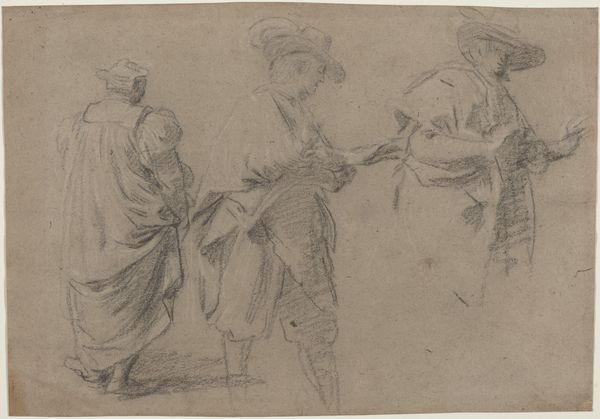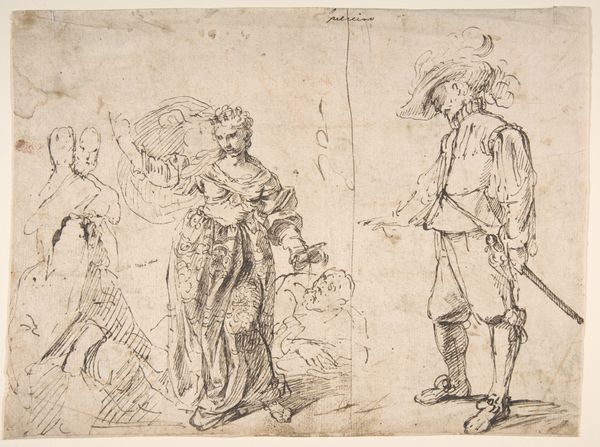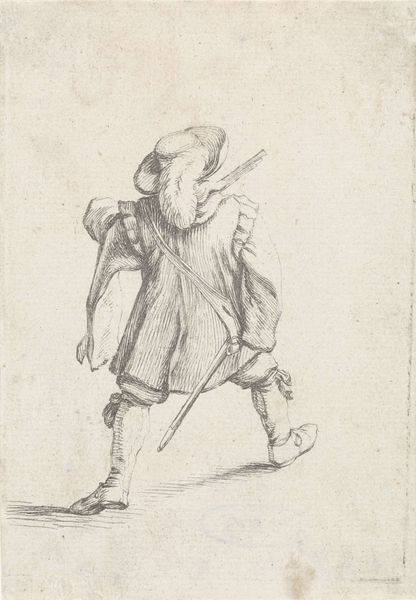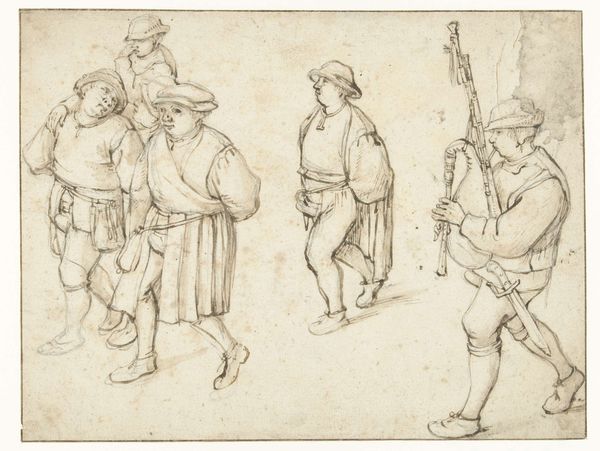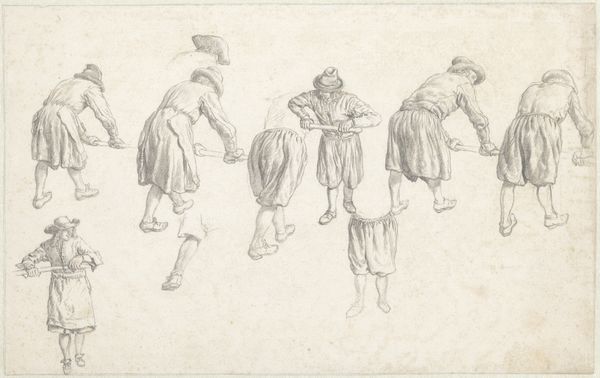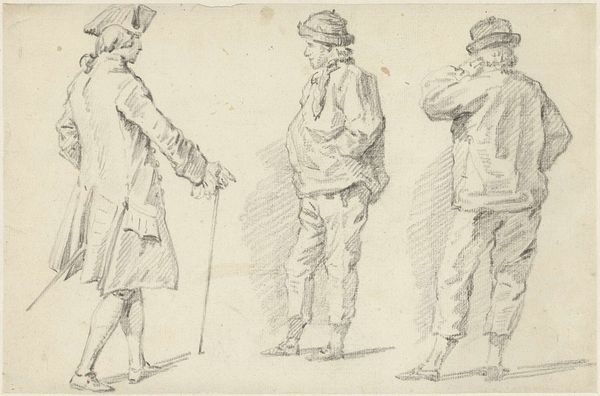
drawing, red-chalk, pastel
#
portrait
#
drawing
#
red-chalk
#
figuration
#
pastel
#
rococo
Copyright: Public Domain
Editor: This is "Two Pilgrims and a Standing Woman in Profile" by Jean-Antoine Watteau, dating from around 1709 to 1712. It's a red-chalk drawing, with some pastel, I believe. I'm struck by how seemingly casual the composition is, almost like a snapshot. What do you see when you look at this piece? Curator: I'm immediately drawn to the materiality of it. Red chalk, especially in Watteau's hands, was a powerful tool. Notice how the lines aren't just outlines, but describe the very fabric of their clothes. This isn’t simply depicting pilgrims; it's displaying the result of specific manufacturing processes that would've involved complex hierarchies of labor to make such exquisite clothes available to wear for the "everyday". Editor: That's a great point. I hadn’t considered how the materials themselves speak to the socio-economic context. How did Watteau manage to elevate chalk from merely a drawing medium to... this? Curator: Consider the labor that went into acquiring the pigment for the red chalk. Where did it come from? Who mined it? Also think of the clothes Watteau's pilgrims and standing woman wear; silk was still rare at the time and required intense levels of exploitation and control during production. It’s also intriguing that Watteau used pastel for highlights. Pastel sticks are ground pigment held together by a binder. In 18th century Europe, materials and production define status, wealth, and luxury, not only their appearance. Watteau captures this with his specific material choices. How does this perspective shift your reading of the work? Editor: It makes me rethink my initial impression of casualness. There’s a very deliberate engagement with the representation of status here through these material choices, which I totally missed! The image becomes a study of consumerism rather than the documentation of specific figures. Curator: Exactly. The “snapshot” is very consciously constructed through the skilled, careful handling of materials that were themselves signifiers of power and consumption. Editor: So, by emphasizing the materiality, you bring the element of labor and economic structures into play. That gives the work a much more interesting, complex meaning. Thanks for helping me see this!
Comments
stadelmuseum almost 2 years ago
⋮
Watteau often drew from models that moved around the studio as casually as possible. The central one of the three figures in this drawing was included in the painting "The Embarkation for Cythera". The men are drawn as pilgrims with a shoulder throw and a travel stick, who want to set off with their companions to the island of Venus, the goddess of love. The sensitive interaction between the lovers corresponds to the masterly way of drawing, in which the red chalk with the finest touches and powerful accents, with dense and open shadow zones, lets the figures be suggestively created from within rather than describe them.
Join the conversation
Join millions of artists and users on Artera today and experience the ultimate creative platform.
